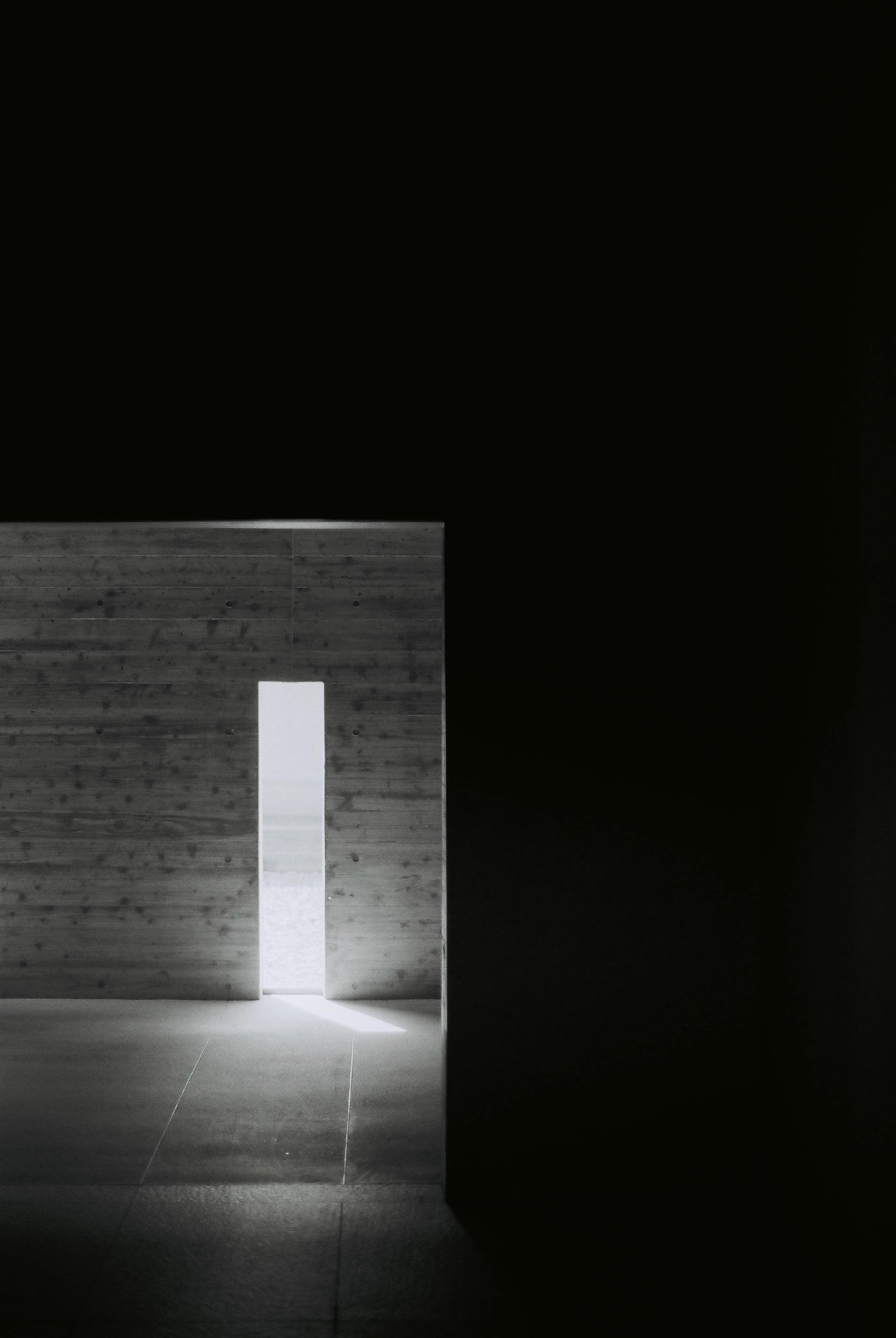Space For Prayer
日本の現代建築において、「祈りの空間」の中に存在する「プリミティブな意識」に着目し、自然に寄り添い生きて来た日本人の死生観や無常観を写そうと試みた。
宗教的に象徴される[形]を削ぎ落としたものの跡には何が残るのか。削ぎ落とされた形から、現代の日本人に宿る死生観を探求した。
展示では、3人の現代建築家が設計を手がけた葬祭場と墓に隣接した礼拝堂の全12枚の大判写真を地下空間に吊るした。平面である写真を2枚組で構成することで建築空間を作ると、人はまるで建築空間に入り込んでかのように回遊する。
宗教的な意味での「形」はもはや必要ではなく、現代人が求める空間は「思索空間」ではないかと、鈴木大拙館を訪れた。
鏡裏の奥の部屋には、谷口吉生が設計した鈴木大拙館の「水庭の波紋」の写真を使って、思索空間を作った。
Taking 3 different Funeral places in Japan, I have ques- tioned myself what remains in the traces of things that scratched away religiously symbolized shapes?
Focussing on the architecture with its nature that evokes primitive consciousness out of contemporary Japanese architecture, and reflects the Japanese view of death and life and a sense of impermanence.
In the exhibition, I tried to create an architectural experience for people to see with using their body by laying out the photographs in the space. I hung a total of 12 large-sized photographs of the Funeral places and chapel that were designed by three contemporary Japanese architects. Compositing six sets of two-sheets photographs to create an architectural space.
To understand the Japanese view of death and life, I visited then Suzuki Daisetsu Museum in Kanazawa after visited those funeral places to better understand of Zen. Because after taking all things out, there are no figures, but just an existence.
In the room in the back, Yoshio Taniguchi designed a Contemplative space with a photograph of a ripple in the water garden where Yoshio Taniguchi’s interpreta- tion of Zen.





